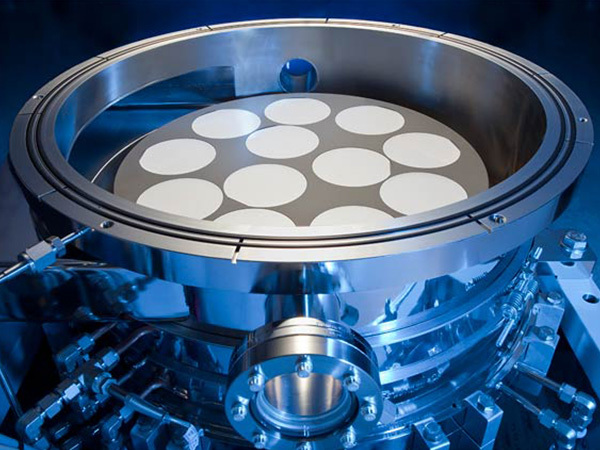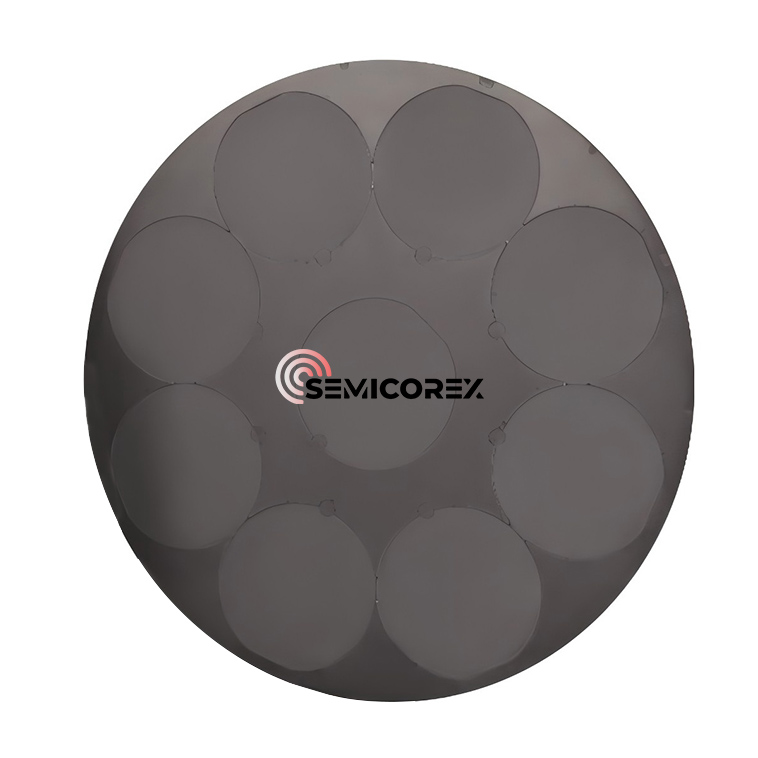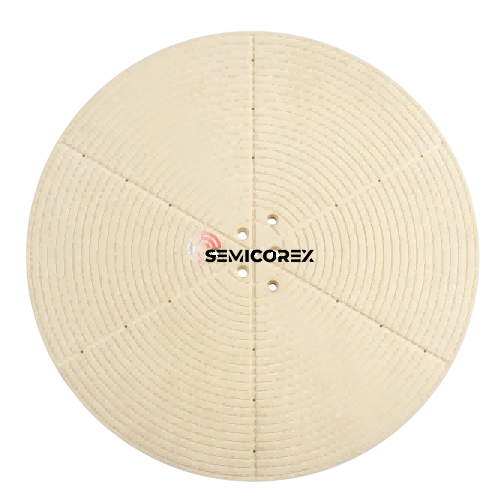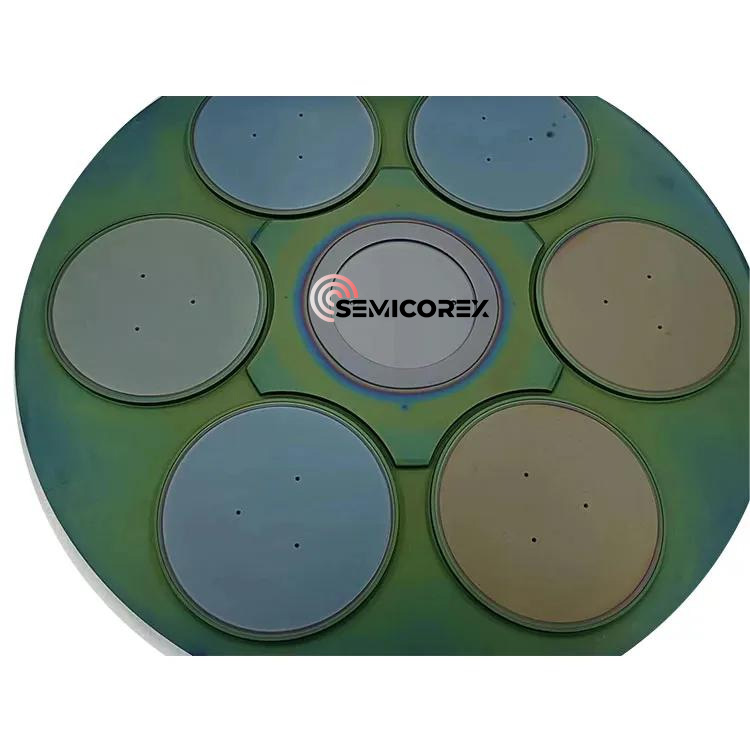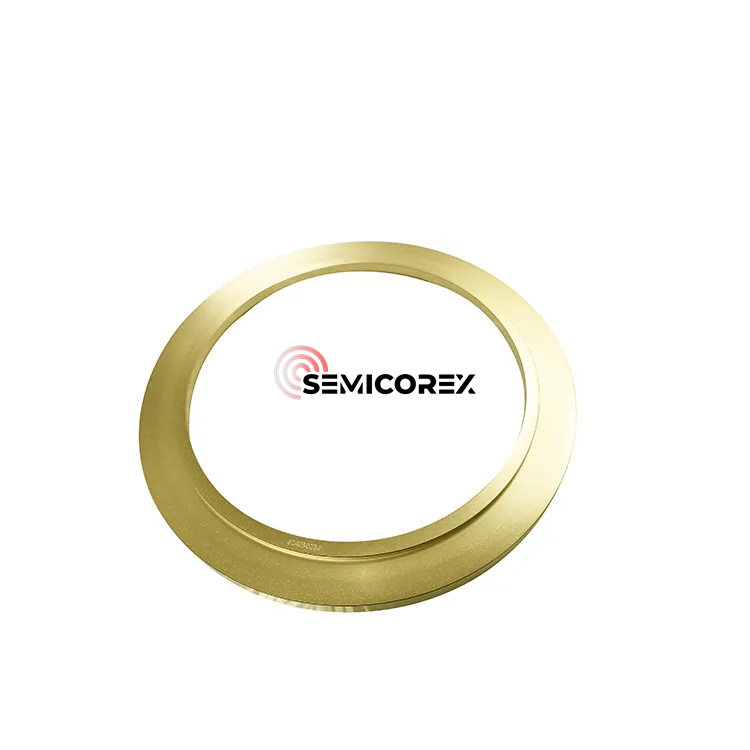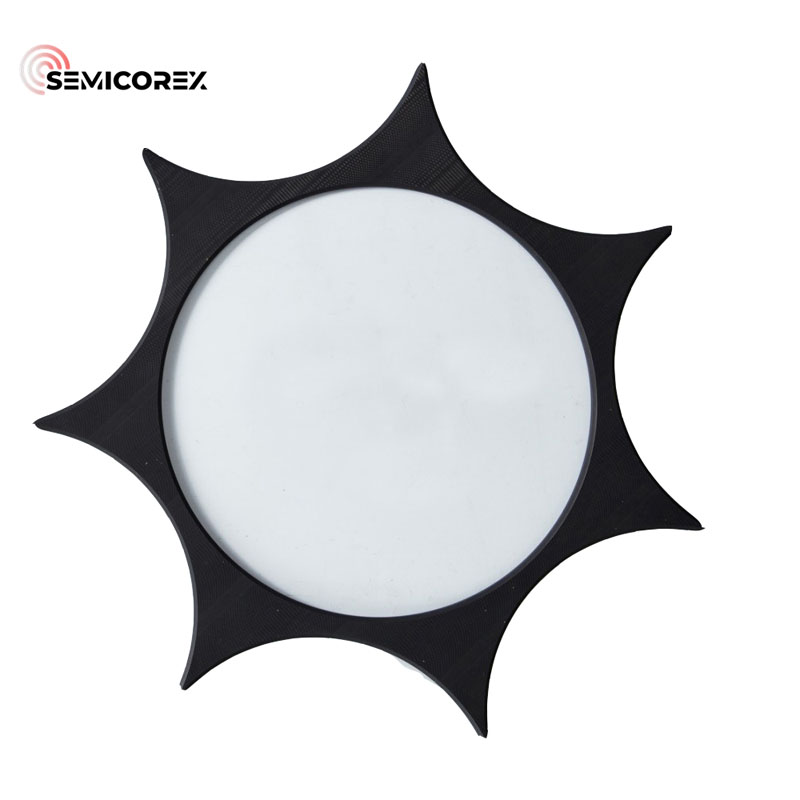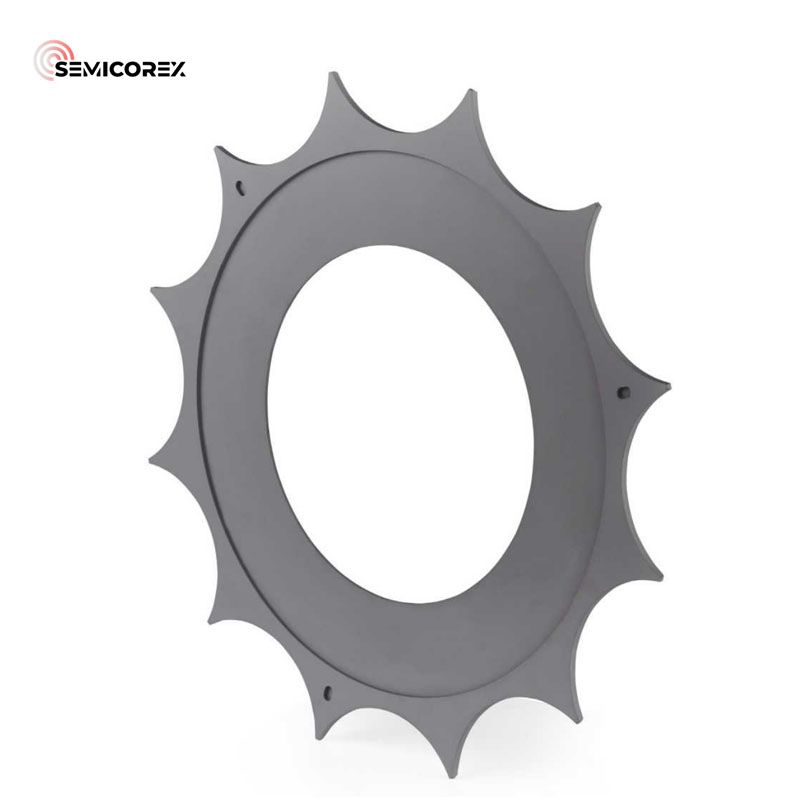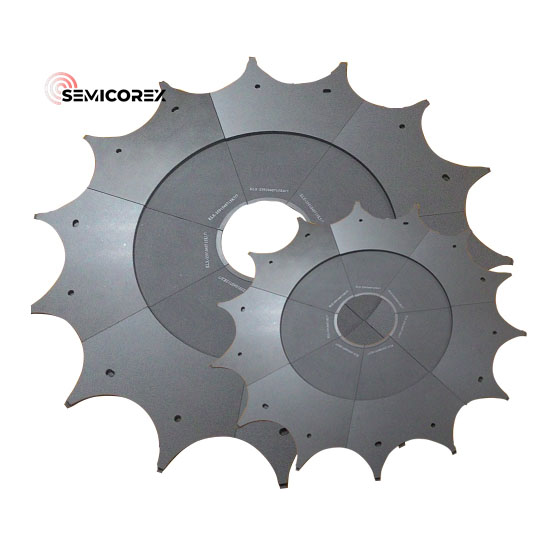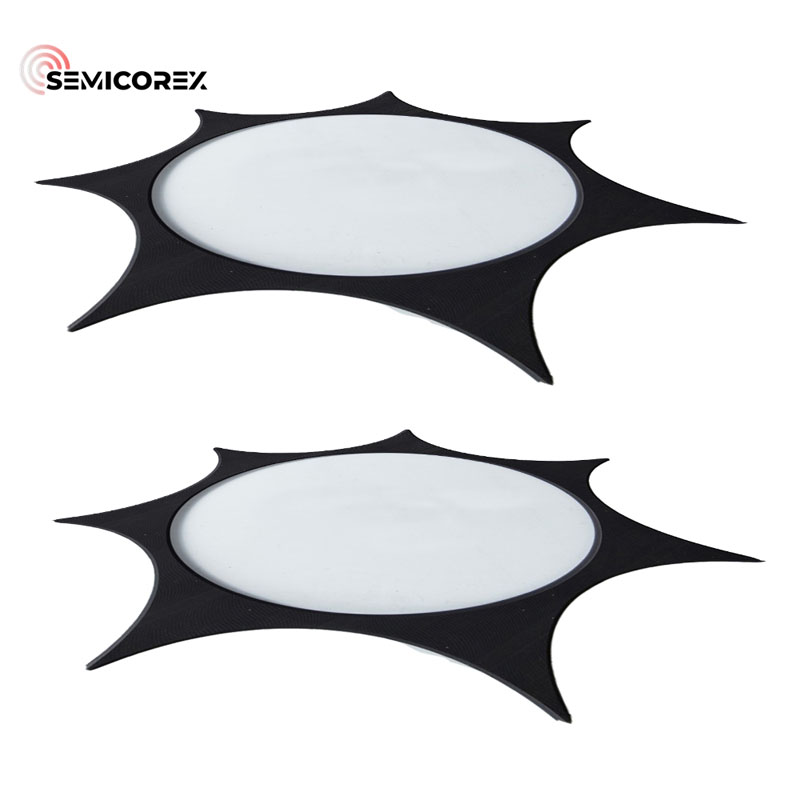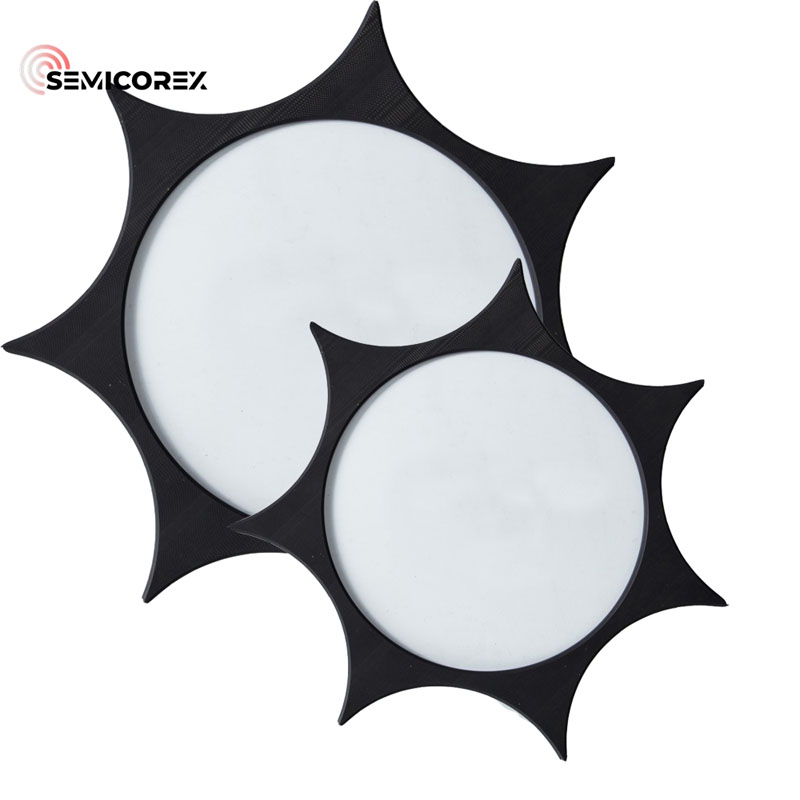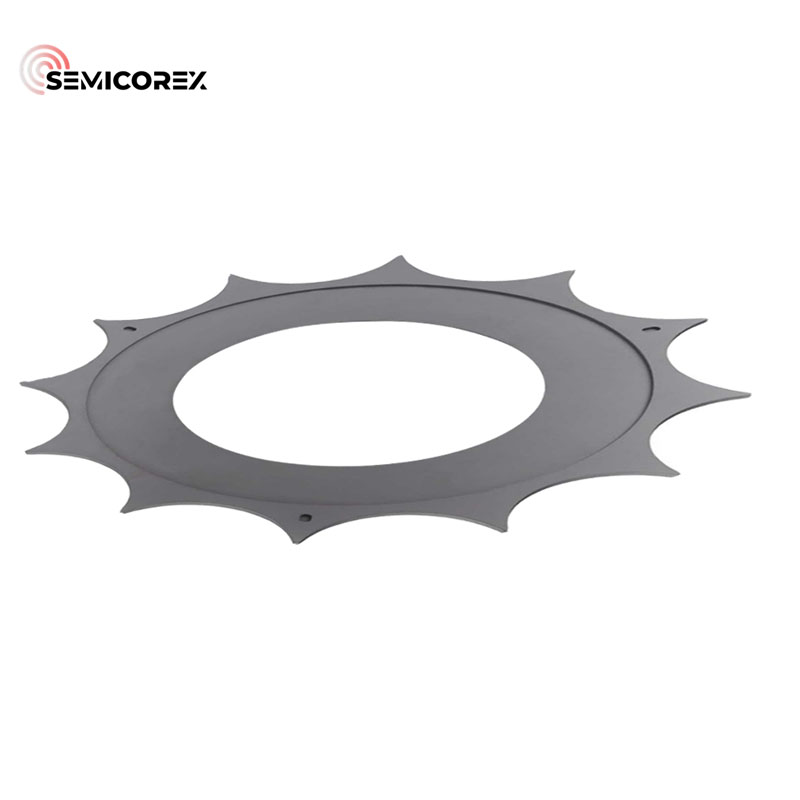
- English
- Español
- Português
- русский
- Français
- 日本語
- Deutsch
- tiếng Việt
- Italiano
- Nederlands
- ภาษาไทย
- Polski
- 한국어
- Svenska
- magyar
- Malay
- বাংলা ভাষার
- Dansk
- Suomi
- हिन्दी
- Pilipino
- Türkçe
- Gaeilge
- العربية
- Indonesia
- Norsk
- تمل
- český
- ελληνικά
- український
- Javanese
- فارسی
- தமிழ்
- తెలుగు
- नेपाली
- Burmese
- български
- ລາວ
- Latine
- Қазақша
- Euskal
- Azərbaycan
- Slovenský jazyk
- Македонски
- Lietuvos
- Eesti Keel
- Română
- Slovenski
- मराठी
- Srpski језик
MOCVD Susceptor for Epitaxial Growth
Semicorex is a leading supplier and manufacturer of MOCVD Susceptor for Epitaxial Growth. Our product is widely used in semiconductor industries, particularly in the growth of the epitaxial layer on the wafer chip. Our susceptor is designed to be used as the center plate in MOCVD, with a gear or ring-shaped design. The product has high heat and corrosion resistance, making it stable in extreme environments.
Send Inquiry
One of advantages of our MOCVD Susceptor for Epitaxial Growth is its ability to ensure coating on all surface, avoiding peeling off. The product has high-temperature oxidation resistance, which ensures stability at high temperatures up to 1600°C. The high purity of our product is achieved through CVD chemical vapor deposition under high-temperature chlorination conditions. The dense surface with fine particles ensures that the product is highly resistant to corrosion from acid, alkali, salt, and organic reagents.
Our MOCVD Susceptor for Epitaxial Growth is designed to achieve the best laminar gas flow pattern, ensuring evenness of thermal profile. This helps to prevent any contamination or impurities diffusion, ensuring high-quality epitaxial growth on the wafer chip.
Contact us today to learn more about our MOCVD Susceptor for Epitaxial Growth.
Parameters of MOCVD Susceptor for Epitaxial Growth
|
Main Specifications of CVD-SIC Coating |
||
|
SiC-CVD Properties |
||
|
Crystal Structure |
FCC β phase |
|
|
Density |
g/cm ³ |
3.21 |
|
Hardness |
Vickers hardness |
2500 |
|
Grain Size |
μm |
2~10 |
|
Chemical Purity |
% |
99.99995 |
|
Heat Capacity |
J·kg-1 ·K-1 |
640 |
|
Sublimation Temperature |
℃ |
2700 |
|
Felexural Strength |
MPa (RT 4-point) |
415 |
|
Young’ s Modulus |
Gpa (4pt bend, 1300℃) |
430 |
|
Thermal Expansion (C.T.E) |
10-6K-1 |
4.5 |
|
Thermal conductivity |
(W/mK) |
300 |
Features of MOCVD Susceptor for Epitaxial Growth
- Avoid peeling off and ensure coating on all surface
High temperature oxidation resistance: Stable at high temperatures up to 1600°C
High purity: made by CVD chemical vapor deposition under high temperature chlorination conditions.
Corrosion resistance: high hardness, dense surface and fine particles.
Corrosion resistance: acid, alkali, salt and organic reagents.
- Achieve the best laminar gas flow pattern
- Guarantee evenness of thermal profile
- Prevent any contamination or impurities diffusion

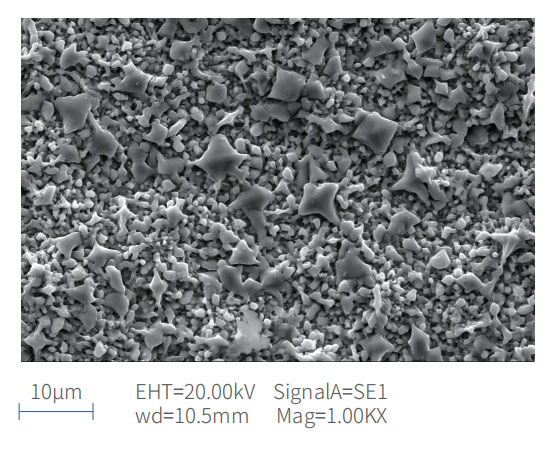

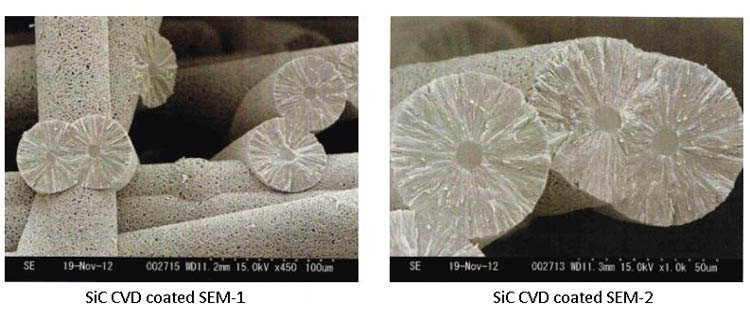

![]()
